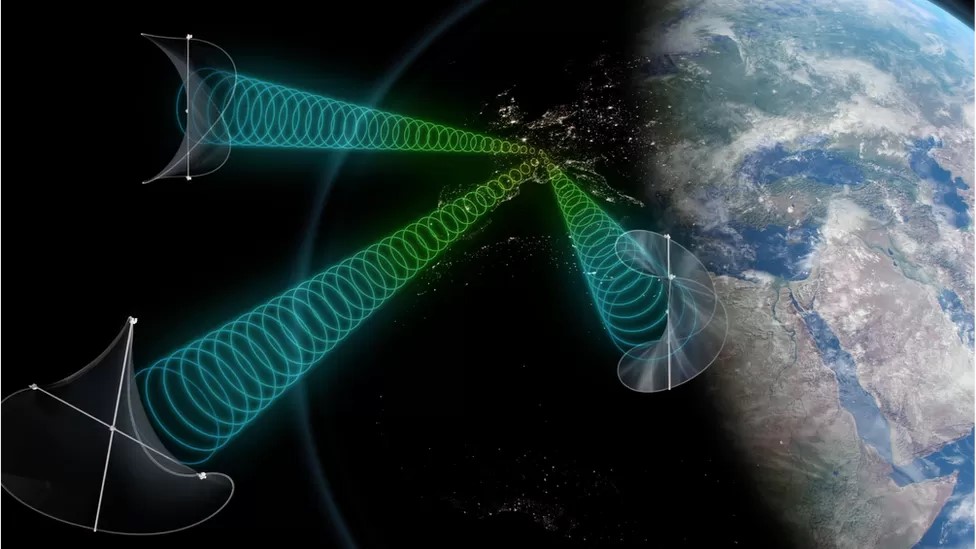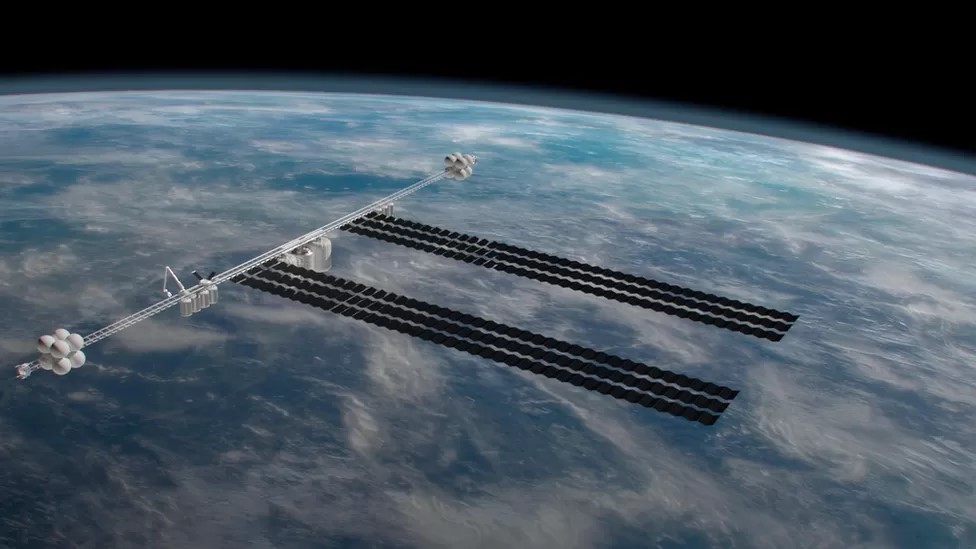
The European Space Agency (ESA) is contemplating the plan of the Solaris initiative to beam solar energy from space in order to distribute electricity wirelessly to Earth.
The aim of the Solaris program is to have giant satellites in orbit, each able to generate the same amount of electricity as a power station.
Following further investigation, ESA will most likely approve the three-year study this week to see if having huge solar farms in space would work and be cost-effective.
Solaris is one of several proposals to be considered by research ministers at the ESA’s Council meeting at its Paris HQ today, Tuesday, November 22, 2022.
The decision made will determine the budget for the next phase of the space agency’s plans for space exploration, environmental monitoring, and communications.
Solaris initiative first practical plan for solar energy from space
Although several organizations and other space agencies have considered the production of solar energy from space, the Solaris initiative would be the first to pose a practical way to realize the idea.
The concept has been discussed for more than fifty years due to the fact that solar energy can be collected much more efficiently in space where there are no clouds or night. However, up to this point in time, it has been too difficult and too expensive to implement.
Yet, the dropping cost of launches, attributed to reusable rockets and other innovations developed by the private sector, could help to reduce the cost of the implementation of the idea.
Advancements in robotics construction in space and the development of technology to wirelessly beam electricity from space to Earth also brings the program’s ambitions closer to reality.
ESA’s Director General Josef Aschbacher told reporters he believes solar power from space could be of enormous aid in addressing future energy shortages.
Aschbacher said, ”We do need to convert into carbon neutral economies and therefore change the way we produce energy and especially reduce the fossil fuel part of our energy production. If you can do it from space, and I’m saying if we could, because we are not there yet, this would be absolutely fantastic because it would solve a lot of problems.”
ESA member nations to fund space solar research
According to ESA’s Dr. Sanjay Vijendran, the scientist leading the Solaris initiative, the idea of space-based solar power is no longer science fiction.
As Vijendran stated, “The potential is there and we now need to really understand the technological path before a decision can be made to go ahead with trying to build something in space.”
The Solaris program basically focuses on establishing whether transferring the solar energy collected in space to electricity grids on Earth is feasible. Since it obviously can’t be done with an extremely long cable, it must be sent wirelessly using microwave beams.
ESA is therefore seeking support from its member nations to fund the Solaris research program. With additional funds, it will be able to determine if developing spaced-based solar power would be reliable and cheap enough to make it an economically viable option.

Solaris confident of wireless transmission of electricity from space
According to the Solaris engineers, in principle, electricity can already be safely and efficiently transmitted wirelessly.
The engineers have already sent 2 KW of power collected from solar cells in that manner to collectors more than thirty meters away at an aerospace firm Airbus demonstration in Munich this past September.
The next big step up would be to send gigawatts of power over thousands of miles. According to Jean Dominique Coste, a senior manager for Airbus’s blue sky division, that could be achieved in a series of small steps.
In his words, “Our team of scientists have found no technical show-stoppers to prevent us from having space-based solar power.”
Dr. Ray Simpkin, the chief scientist of Emrod, the firm that developed the wireless beaming system, said that the technology was safe, maintaining that “nothing will get fried.”
As he explained, “The power is spread out over a such a large area that even at its peak intensity in the [center] of the beam it will not be hazardous to animals or humans.”
Other agencies considering a similar concept
A UK government independent of the ESA plan recently reported that having a satellite capable of producing the same amount of electricity as a power station of around 2 GW might be be possible by 2040, which is in line with the ESA’s own estimates.
Dr. Vijendran noted that it could be done within a decade with increased funding and greater political support. This would be something akin to the deadline set by US President John Kennedy in 1961 to send an American astronaut to the lunar surface. “It could be our generation’s equivalent of the moon shot,” he said.
Space Solar, a company operating in the UK separately from the ESA, has also come up with a proposal that aims to beam power from space within the upcoming six years as well as commercially within nine.
The US, China, and Japan have joined the race to develop space-based solar power now, too, and are expected to announce their own, individual plans shortly.
See all the latest news from Greece and the world at Greekreporter.com. Contact our newsroom to report an update or send your story, photos and videos. Follow GR on Google News and subscribe here to our daily email!



